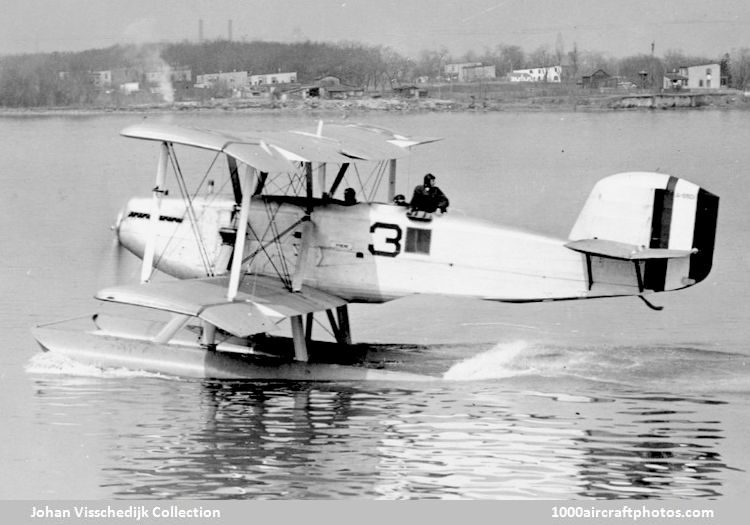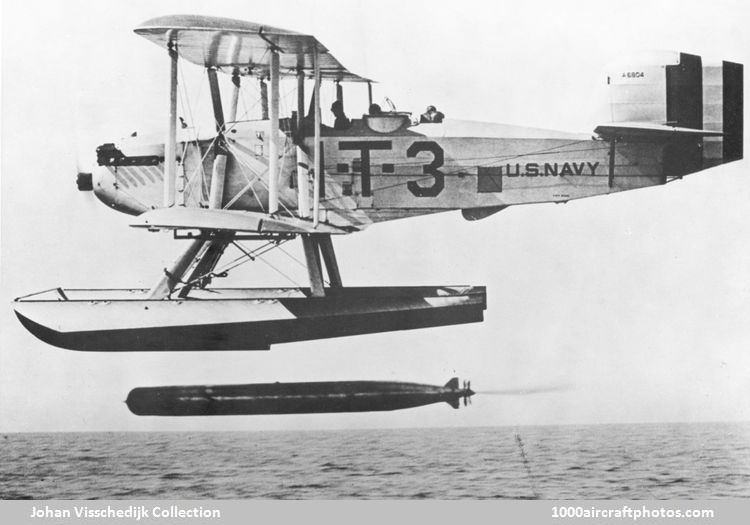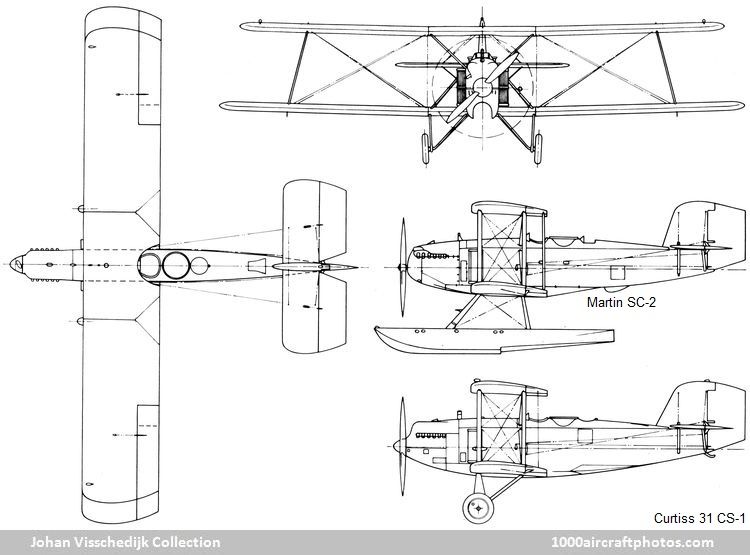08/31/2021. Remarks by
Johan Visschedijk: "Much effort was devoted to the development of torpedo-bombers for the USN in the years following WW I, and for some time these types followed a clearly defined pattern. Powered by in-line, liquid-cooled engines, they were large biplanes with a crew of two or three, provision for torpedo stowage under the fuselage, and interchangeable wheel or float chassis.
The CS was a multi-purpose scout-bomber-torpedoplane designed by the US Navy Bureau of Aeronautics. As with the Navy-designed TS, the Curtiss Aeroplane and Motor Co., Inc. of Buffalo, New York, won competitive bidding for a production order. In this case, however, Curtiss was recognized as the manufacturer in the aircraft designation, the letters CS identifying the aircraft as Curtiss Scout in the initial Naval designation system of 1922-23.
The basic design of the CS was inspired by the earlier Douglas DT landplane or twin-float seaplane, improved primarily by the use of the later 525 hp Wright T-2 twelve-cylinder liquid-cooled V-engine. The fuselage was welded steel-tubing and the folding wing featured a bottom wing longer than the upper. A unique design feature was a channel in the belly to receive the standard Naval torpedo, which was too long for complete internal stowage. Standard crew was three, a pilot and rear gunner in two tandem cockpits and a torpedoman/bomb-aimer inside the fuselage. The gunner operated a 0.30 in (7.62 mm) flexible gun, the aimer had access to a similar caliber gun firing through a port in the belly.
Six CS-1s (Curtiss Model 31, BuNos. A-6500 to A-6505) were ordered in June 1922, the company's first torpedo-bomber first flew in November 1922. The second CS-1 (A-6502) was converted to the CS-2 prototype, with a 575 hp Wright T-3 Tornado engine, more fuel capacity and an optional third float when used as a seaplane. A-6502 also featured the first application of the famous Curtiss wing surface radiators to a US Navy aircraft. Two CS-2 production aircraft (Curtiss Model 31A, BuNos. A-6731, A-6732) were delivered in April 1924. The CS-1s and CS-2s served with Squadron VT-1 with sufficient success to be chosen to replace the Douglas DT-2s, and a production contract was put out to tender in the aircraft industry.
The CS-2 with BuNo. A-6731 was redesignated CS-3 by the USN following the change to a geared T-3 engine in November 1924. The Glenn L. Martin Company of Cleveland, Ohio, then refined the design and produced 124 as the
T3M-1 and T3M-2.
The CS-4 and CS-5 were USN conversion, details unknown.
Martin SC-1 (A-6804)
The Martin company underbid Curtiss for additional CS-1s. CS-1 A-6501 was sent to Martin as a sample and 35 (BuNos. A-6801 to A-6835) were built by Martin under the Curtiss designation but with the letters reversed as SC-1 in the post-1923 designation system. Delivered in the first half of 1925, the SC-1s were issued to VT-1, VT-2 and VS-1. As with the CS-1, Martin underbid Curtiss for further CS-2 orders; forty were built under the designation of SC-2 (A-6928 to A-6967), and all had been delivered by the end of 1925.
The SC-1 with BuNo. A-6835 was re-engined with a 730 hp Packard 1A-2500 twelve-cylinder liquid-cooled V-engine and was redesignated XSC-6. Subsequently SC-1 A-6834 was also re-engined with an 1A-2500 and redesignated SC-6.
The Curtiss CS-1 A-6503 was fitted with a Wright T-3A Tornado engine and redesignated XSC-7.
By mid-1927, only one USN unit, VT-28, was flying SC-1s and SC-2s; fifteen of each type were serving in VN-3D8 training squadron at Pensacola, and the remainder had been withdrawn."



